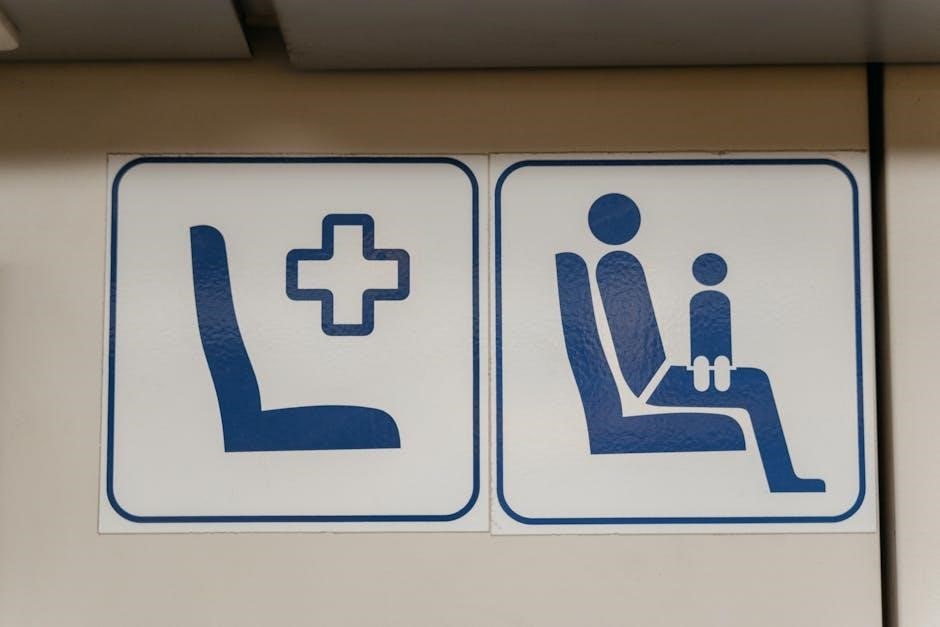
eye wash station instructions pdf
Need an eye wash station instructions PDF? Download our super simple guide and say goodbye to blurry vision and hello to sparkling clarity! Easy steps inside.
Eyewash Station Instructions PDF: A Comprehensive Guide

Eyewash Station Signage and Visibility
Emergency eyewash stations must be easily located. This requires clear and visible signage. Signs should be highly visible, well-lit, and placed near the stations. Obstacles obstructing access must be removed for quick access. Signage ensures immediate identification during emergencies.

Eyewash stations are critical safety devices found in laboratories, workshops, and other workplaces where exposure to hazardous substances is possible. These stations provide an immediate and effective means of flushing contaminants from the eyes, minimizing potential damage and injury. The first few seconds after exposure are crucial, making quick access to a properly functioning eyewash station essential.
Eyewash stations come in various forms, including plumbed units connected to a water supply and self-contained, portable units. Regardless of the type, all eyewash stations must meet specific requirements outlined by safety standards like ANSI Z358.1-2014. These standards ensure that the stations deliver an adequate flow of potable water for a sufficient period, typically 15 minutes, to thoroughly flush the eyes.
Regular maintenance, inspection, and employee training are vital for ensuring the effectiveness of eyewash stations. Workers must know the location of the nearest eyewash station and how to use it properly in an emergency. Proper usage and maintenance can significantly reduce the severity of eye injuries caused by chemical or biological agents.
ANSI Z358.1-2014 Standard Compliance
The ANSI Z358.1-2014 standard sets the benchmark for emergency eyewash and shower equipment, ensuring they provide adequate protection in hazardous environments. Compliance with this standard is crucial for workplace safety, dictating specific requirements for the design, installation, performance, and maintenance of eyewash stations.
One of the key aspects of the standard is the requirement for a tepid water supply; The water temperature should be between 60°F and 100°F (16°C and 38°C) to prevent thermal shock and encourage users to flush their eyes for the full recommended 15 minutes. The standard also specifies the required flow rate, spray pattern, and location of the eyewash nozzles to ensure effective flushing.
Regular testing and inspection are essential to maintain compliance. The standard mandates weekly activation of plumbed eyewash stations to flush out stagnant water and minimize microbial contamination. Self-contained units also require periodic inspection and fluid replacement, following the manufacturer’s instructions. Adhering to ANSI Z358.1-2014 ensures that eyewash stations are ready and effective when needed most.
Eyewash Station Installation Guidelines
Proper installation is paramount for eyewash stations to function effectively during emergencies. Eyewash stations should be installed in easily accessible locations, within 10 seconds reach of potential hazards. The path to the station must be clear of obstructions, ensuring immediate use.
Plumbed eyewash stations require connection to a potable water supply, adhering to plumbing codes. The water supply must provide tepid water, as specified by ANSI Z358.1-2014, typically between 60°F and 100°F (16°C and 38°C). Self-contained units should be placed on a level surface and refilled according to manufacturer instructions.
Eyewash nozzles should be positioned 33-53 inches from the floor and 6 inches from the wall. Adequate lighting is essential for visibility. Emergency eyewash signs should be conspicuously posted near the station. After installation, verify the unit functions correctly, ensuring proper flow rate and spray pattern. Regular inspections are vital for continued functionality. The installation area must allow for comfortable use during the required 15-minute flushing period.
Proper Usage of Eyewash Stations
Knowing how to use an eyewash station correctly is crucial in an emergency. The first few seconds after exposure to a hazardous substance are critical. Immediately proceed to the nearest eyewash station, which should be easily accessible and free from obstructions.
Activate the eyewash station by pulling the lever or pushing the designated handle. Position your eyes directly in the stream of water, ensuring both eyes are thoroughly irrigated. Use your hands to keep your eyelids open, allowing the water to flush the entire surface of your eyes.
Flush your eyes continuously for a minimum of 15 minutes, as recommended by ANSI Z358.1-2014. If you wear contact lenses, remove them as quickly as possible before or during flushing. After flushing, seek medical attention immediately, regardless of whether you feel relief.
Report the incident to supervisors and complete any necessary incident reports. Understanding proper usage minimizes potential eye damage and ensures effective decontamination. Regular training and drills can help employees become familiar with the location and operation of eyewash stations.
Maintenance and Inspection Procedures
Regular maintenance and inspection are vital to ensure eyewash stations function correctly during an emergency. Establish a routine inspection schedule, ideally weekly, to check for any issues. Inspections should include verifying the water flow is adequate and the water is clear and free from debris.
Activate the eyewash station during inspections to flush out any stagnant water and prevent microbial contamination. Ensure all parts are in good working order, including nozzles and activation mechanisms. Document all inspections, noting any repairs or maintenance performed.
Self-contained eyewash stations require specific maintenance, such as fluid replacement every six months or as directed by the manufacturer. Plumbed eyewash stations should be flushed regularly to maintain water quality. Address any leaks, clogs, or malfunctions promptly.
Keep the area around the eyewash station clean and free from obstructions. Trained personnel should conduct thorough annual inspections. Following these maintenance and inspection procedures ensures the eyewash station is ready for use and compliant with safety standards. Proper maintenance prevents potential harm.
Preventing Microbial Contamination

Microbial contamination in eyewash stations poses a significant health risk, necessitating proactive prevention measures. Regular flushing of plumbed eyewash stations is crucial to eliminate stagnant water, which can harbor bacteria and other microorganisms. Follow manufacturer instructions regarding the frequency and duration of flushing.
For self-contained units, adhere strictly to the recommended fluid replacement schedule, typically every six months, to prevent the growth of contaminants. Use only approved eyewash solutions and avoid using expired fluids, as they may lose their effectiveness and increase the risk of contamination.
Clean the eyewash station components, including nozzles and basins, regularly with a mild disinfectant to inhibit microbial growth. Inspect the unit for any signs of contamination, such as discoloration or unusual odors. Ensure the eyewash station is properly sealed to prevent environmental contaminants from entering.
Document all maintenance and cleaning procedures to track compliance and identify potential issues. By implementing these preventive measures, you can maintain a safe and effective eyewash station.
Emergency Procedures and Eyewash Stations
In any chemical exposure emergency, immediate access to a functioning eyewash station is paramount. The first few seconds are crucial to minimize potential eye damage. Employees should be thoroughly trained on the location of eyewash stations and the proper procedures for their use.
Upon exposure, immediately proceed to the nearest eyewash station. Remove contact lenses, as they can trap chemicals against the eye. Activate the eyewash station and position your eyes in the flushing stream, ensuring both eyes are thoroughly irrigated.
Flush the eyes continuously for a minimum of 15 minutes, keeping the eyelids open to allow for complete rinsing. Seek immediate medical attention following eyewash use, regardless of the apparent severity of the exposure.
Report the incident to supervisors and relevant safety personnel. Document the details of the exposure, including the chemical involved and the duration of flushing. Regularly review emergency procedures to ensure familiarity and effectiveness. Conduct drills to simulate emergency scenarios and reinforce proper eyewash station usage.

Dual Purpose Eyewash/Drench Hose Units
Dual-purpose eyewash/drench hose units offer versatile safety solutions, combining both eyewash and drenching capabilities in a single fixture. These units are designed to meet ANSI Z358.1-2014 standards, providing comprehensive protection against chemical splashes and spills. Typically installed on countertops near sinks, they offer convenient access for immediate response.
The drench hose provides targeted flushing for specific areas of the body, while the eyewash station delivers a gentle stream of water for eye irrigation. These units are particularly useful in laboratories and industrial settings where exposure to hazardous substances is possible.
Regular inspection and maintenance are crucial to ensure proper functionality. Activation should be tested regularly to verify adequate flow and water quality. Dual-purpose units can be space-saving. They provide a convenient and effective solution for comprehensive safety needs. Training on the proper use of both eyewash and drench hose functions is essential for all personnel.
Eyewash Station Signage and Visibility
Ensuring the visibility of eyewash stations is paramount for effective emergency response. Eyewash stations must be clearly identified with highly visible signs that comply with safety standards. These signs should be strategically placed to guide individuals to the nearest eyewash station quickly. Proper illumination further enhances visibility, especially in low-light conditions.
Obstructions hindering access to eyewash stations must be removed to ensure immediate usability. Regular inspections should include verifying the presence and clarity of signage. The signs should use universally recognized symbols and be multilingual if necessary to accommodate diverse workforces.
The location of each eyewash station should be incorporated into safety training programs, ensuring all personnel are aware of their locations. Consistent signage and clear pathways contribute to a safer work environment, minimizing the impact of eye injuries. Visibility plays a crucial role in rapid response.
Specific Eyewash Station Models and Instructions
Different eyewash station models require specific operating procedures and maintenance protocols. The Fendall Pure Flow 1000, for instance, must be installed indoors in a well-lit, accessible location, following the manufacturer’s instructions precisely. AquaGuard gravity-fed units are activated by pulling down on the yellow panel, ensuring the eyes enter the stream.
Each model comes with its own installation and operation manual that should be consulted for detailed instructions. These manuals provide information on proper mounting, activation, and maintenance schedules. Some stations require regular cleaning and fluid replacement, as outlined in their respective instructions.
Understanding the unique features and requirements of each eyewash station is crucial for ensuring its effectiveness. Training programs should cover the specific instructions for all models present in the workplace. Adhering to these instructions minimizes risks.